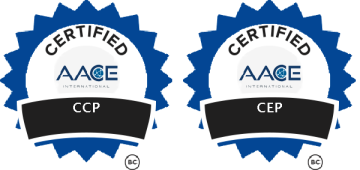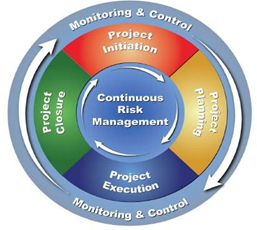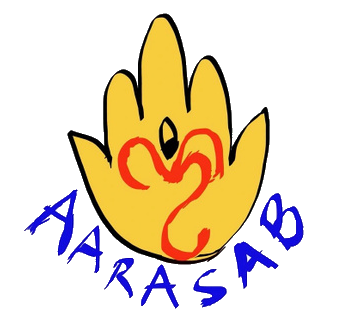Project Risk Management

AACEI defines risk management as the “process of identifying risk factors (risk assessment), analyzing and quantifying the properties of those factors (risk analysis), treating the impact of the factors on planned asset or project performance and developing a risk management plan (risk treatment), and implementing the risk management plan (risk control). The goal of risk management is to increase the probability that a planned asset or project outcome will occur without decreasing the value of the asset or project. Risk management presumes that deviations from plans may result in unintended results (positive or negative) that should be identified and managed.”
A risk is anything that could potentially impact your project’s timeline, performance or budget. Risks are potentialities, and in a project management context, if they become realities, they then become classified as “issues” that must be addressed. Risk management can mean different things on different types of projects. On large-scale projects, risk management strategies might include extensive detailed planning for each risk to ensure mitigation strategies are in place if issues arise. For smaller projects, risk management might mean a simple, prioritized list of high, medium and low priority risks.
Aarasab NL offers risk assessment, risk analysis, risk treatment as well as risk control as defined above to all our clients and in all phases of the project. As a tool, we use Pallisade’s @Risk for all definitive (Class 3 onwards) estimates and John Hollman’s parametric tool that is designed for early estimates. Both tools are Excel based that leads to easy integration with most estimating systems in use around the world.
Using these tools, Aarasab NL offers the gamut of assessing, analysing and controlling risk for projects. Current best practices in risk management require us to assess 3 types of risk for large projects.
These are:
- Event Driven Risk
- Schedule Risk
- Systemic Risk
For smaller projects, we offer risk management on a portfolio basis that can be broken down on specific projects using a risk register. We have found through experience that it has been the most cost and capital effective way of managing risk money on smaller projects.

The illustration shows the importance of risk management throughout the lifecycle of the project.

Corporate Wide
Risk Management Framework
However, this will be ineffective without a structured risk management framework, as this leads to:
- Incomplete impact evaluation, leading to loss of:
- Knowledge of the overall impact on the project objectives, like scope, time, cost, and quality
- Identification of secondary or new risks arising from the already identified risks
- Lack of transparency and a communication gap within and outside the team
Thus, it is very important for any project organization to set up an effective risk management framework. Instituting such a practice as a project team culture ensures:
- Conscious and focused risk identification and management
- Project progress as desired, with the least amount of deviations or surprise, and in line with project and organizational objectives
- Early and effective communication of project issues to organization and project stakeholders
- An effective team building tool, as team buy-in and acceptance is assured

Project Specific
Risk Management Plan
Next, we assist clients in setting up the project specific risk management plan. In this situation, the organization-mandated risk management framework is reviewed and tailored to define the project risk management plan when the project is initiated.
The risk management plan would include these definitions and guidelines:
- List of possible risk sources and categories
- Impact and probability matrix
- Risk reduction and action plan
- Contingency plan
- Risk threshold and metrics

Event Driven Risk
Event based risks are future possible events known as stochastic uncertainty or event risk. This in general refers to an event that has not happened yet. In case the situation or event does happen, it can influence one or more other objectives. Aarasab NL uses the project risk register to note all project risks. It is one of Aarasab NL best practices to encourage all project team members to send all potential risk events to the risk coordinator on the project. We use risk alerts for all potential risk events. These are then discussed in a biweekly risk alignment meeting with specially appointed risk committee members to see which make it to the risk register for further mitigation. In the event driven risks, the following are examples of what might be included:
- A key supplier might go out of business while the project is ongoing
- Client design requirements might change upon completion of design
- New regulatory limitations might be enforced
- A critical resource might be lost during an important phase of the project
Of course, it is important to remember that the risk register is not for only threats to the project but also a list of opportunities that might prove cost beneficial to the project.
Aarasab NL’s approach to event driven risk assessment and analysis is based on the top-down approach which has proven to provide a bigger view in contrast to the bottom-up approach.

Schedule Risk
Schedule risk is the likelihood of failing to meet schedule plans and the effect of that failure. It exists in every schedule and is impossible to predict, with complete confidence, the length of time necessary to complete an activity, meet a milestone, or deliver a system. This uncertainty introduces the risk element into the planning process.
In the early phases of the project, Aarasab NL uses the extensive experience gained over the last 25 years as well as the help of other project experts to predict schedule risk. As the project proceeds to the various stage gates, more information is available. However, the additional information also introduces additional uncertainties. Aarasab NL uses the @Risk program to calculate the schedule risk to the project with the adopted project schedule as the baseline. This uses a Monte Carlo simulation to estimate contributions of each activity’s duration and aggregating these distributions to then determine the actual schedule risk and to identify the schedule risk drivers.

Systemic Risk
Systemic risks relate to overarching issues such as:
- Level of new technology
- Degree of project definition
- Project complexity
- Project size
- Organization’s ability to manage large projects
- Planned engineering-construction overlap
- Ability to maintain funding
- Labour availability in closed markets
- Project team cohesiveness
To calculate these risks, Aarasab NL uses a widely used in-house program that was developed by John Hollman. It is a tailored and widely used parametric model that is designed to address systemic cost and schedule risks at the appropriate level.
